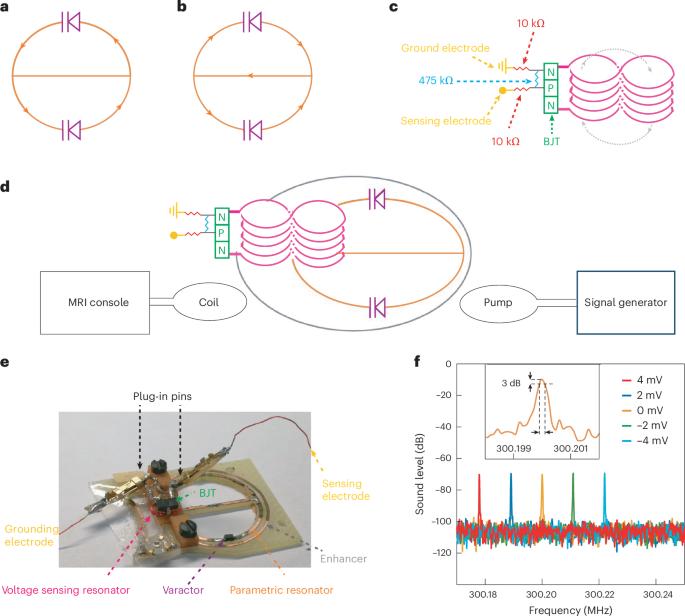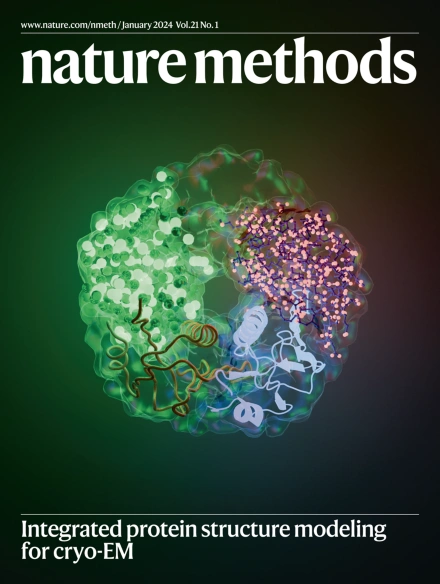WISDEM: a hybrid wireless integrated sensing detector for simultaneous EEG and MRI
IF 32.1
1区 生物学
Q1 BIOCHEMICAL RESEARCH METHODS
引用次数: 0
Abstract
Concurrent recording of electroencephalogram (EEG) and functional magnetic resonance imaging (fMRI) signals reveals cross-scale neurovascular dynamics crucial for explaining fundamental linkages between function and behaviors. However, MRI scanners generate artifacts for EEG detection. Despite existing denoising methods, cabled connections to EEG receivers are susceptible to environmental fluctuations inside MRI scanners, creating baseline drifts that complicate EEG signal retrieval from the noisy background. Here we show that a wireless integrated sensing detector for simultaneous EEG and MRI can encode fMRI and EEG signals on distinct sidebands of the detector’s oscillation wave for detection by a standard MRI console over the entire duration of the fMRI sequence. Local field potential and fMRI maps are retrieved through low-pass and high-pass filtering of frequency-demodulated signals. From optogenetically stimulated somatosensory cortex in ChR2-transfected Sprague Dawley rats, positive correlation between evoked local field potential and fMRI signals validates strong neurovascular coupling, enabling cross-scale brain mapping with this two-in-one transducer. WISDEM is a hybrid detector for simultaneous EEG and fMRI recordings without artifacts or crosstalk, which allows access to neural activity at high temporal and spatial resolution, respectively, as demonstrated in rats.

WISDEM:一种用于同时进行EEG和MRI的混合无线集成传感检测器。
同时记录脑电图(EEG)和功能磁共振成像(fMRI)信号揭示跨尺度神经血管动力学对解释功能和行为之间的基本联系至关重要。然而,核磁共振扫描仪产生伪影的脑电图检测。尽管有现有的去噪方法,但与EEG接收器的电缆连接容易受到MRI扫描仪内部环境波动的影响,从而产生基线漂移,使EEG信号从噪声背景中检索变得复杂。在这里,我们展示了同时用于EEG和MRI的无线集成传感检测器,可以在检测器振荡波的不同侧带上编码fMRI和EEG信号,以便在整个fMRI序列期间由标准MRI控制台检测。局部场电位和功能磁共振成像图是通过低通和高通滤波频率解调信号检索。从chr2转染的Sprague Dawley大鼠的光遗传学刺激的体感觉皮层中,诱发的局部场电位和fMRI信号之间的正相关验证了强神经血管耦合,可以使用这种二合一传感器进行跨尺度脑映射。
本文章由计算机程序翻译,如有差异,请以英文原文为准。
求助全文
约1分钟内获得全文
求助全文
来源期刊

Nature Methods
生物-生化研究方法
CiteScore
58.70
自引率
1.70%
发文量
326
审稿时长
1 months
期刊介绍:
Nature Methods is a monthly journal that focuses on publishing innovative methods and substantial enhancements to fundamental life sciences research techniques. Geared towards a diverse, interdisciplinary readership of researchers in academia and industry engaged in laboratory work, the journal offers new tools for research and emphasizes the immediate practical significance of the featured work. It publishes primary research papers and reviews recent technical and methodological advancements, with a particular interest in primary methods papers relevant to the biological and biomedical sciences. This includes methods rooted in chemistry with practical applications for studying biological problems.
 求助内容:
求助内容: 应助结果提醒方式:
应助结果提醒方式:


